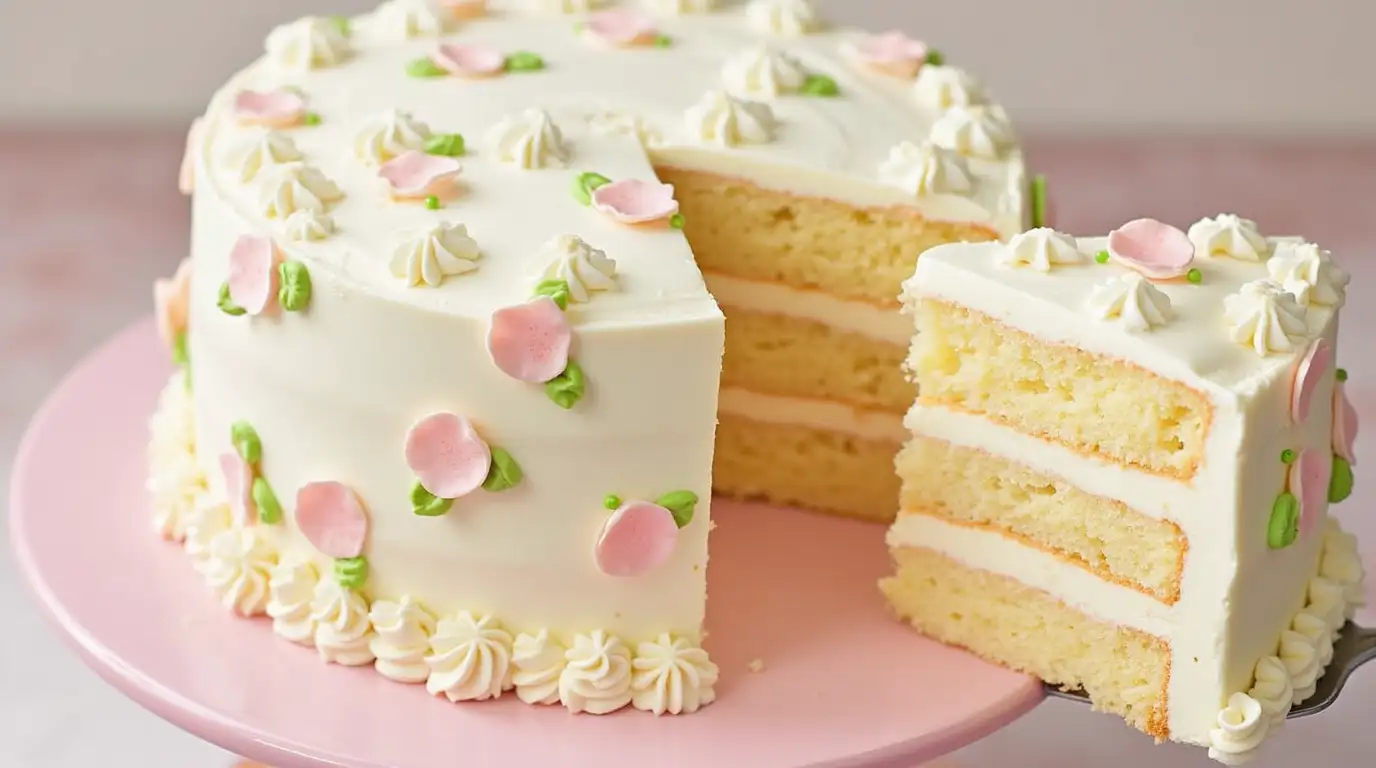Imagine slicing into a cake that looks like it belongs in a fairy tale – a smooth, vibrant green dome hiding layers of delicate sponge, creamy custard, and billowy whipped cream. That’s the magic of Princess Cake, or as the Swedes call it, Prinsesstårta. Have you ever wondered what makes this Scandinavian showstopper so different from other layered confections? Unlike traditional stacked layer cakes that rely on uniform horizontal layers, Princess Cake surprises with its distinctive domed shape and unique combination of textures. While Black Forest cake seduces with chocolate and cherries, and Victoria sponge charms with its simplicity, the Princess Cake offers an entirely different experience – one where the sweet marzipan exterior gives way to an architecture of lightness and cream. Whether you’re a seasoned baker looking to expand your repertoire or simply curious about European cake traditions, join me as we uncover the royal secrets that make this Swedish dessert truly one of a kind.
The Royal History of Princess Cake
When it comes to layer cakes with a story, few can rival the elegant Princess Cake. This Swedish masterpiece, known locally as “Prinsesstårta,” stands apart in the world of patisserie with its distinctive green marzipan dome and intricate layering technique. Unlike its flat-topped cousins, this cake commands attention at any dessert table with its rounded silhouette and royal connections.
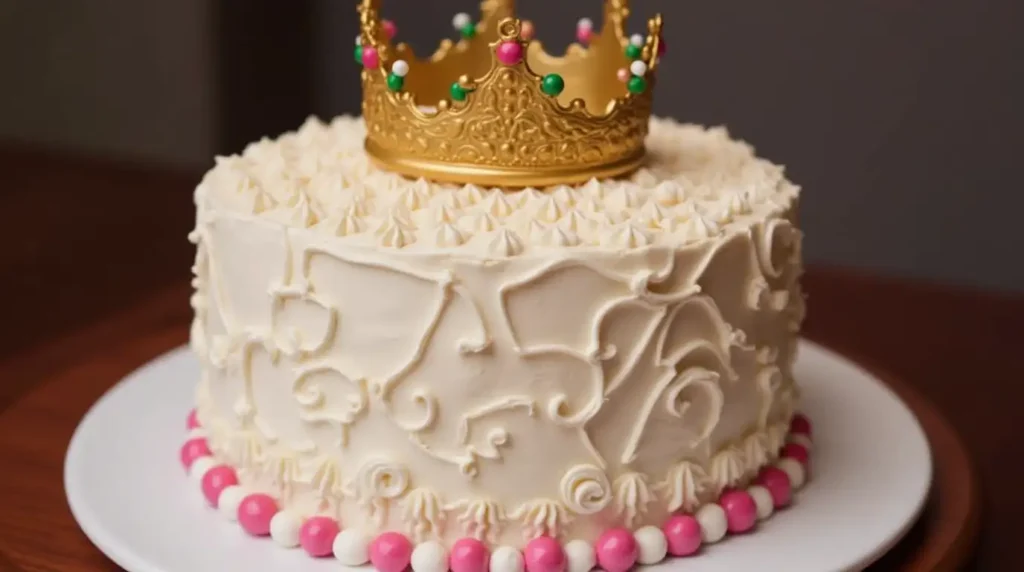
Swedish Origins: From Royal Kitchens to Global Popularity
The Princess Cake first emerged in the 1920s, created by Jenny Åkerström, a home economics teacher to Sweden’s royal princesses – Margaretha, Märtha, and Astrid. Originally called “green cake” due to its signature color, it later became associated with the princesses who adored it. While American layer cakes often rely on buttercream for structure and sweetness, Princess Cake takes a lighter approach with delicate genoise sponge and cloud-like whipped cream.
The Evolution of the Traditional Prinsesstårta
Over decades, the Princess Cake has maintained its core identity while embracing subtle variations. The classic version features:
- Light genoise sponge layers (typically 3)
- Vanilla-infused pastry cream
- A substantial dome of whipped cream
- A thin layer of raspberry jam
- Green marzipan coating
- A pink marzipan rose garnish
This architecture creates a textural experience that’s fundamentally different from the uniform layers of an Opera cake or the dense crumb of a German chocolate cake. The dome shape isn’t just for appearances—it allows for a higher ratio of cream filling that transforms each bite.
Cultural Significance in Swedish Celebrations
In Sweden, this isn’t just another pretty cake. It’s a cultural institution with its own dedicated week! The last week of September is officially “Prinsesstårta Week,” when bakeries across Sweden donate a portion of each cake sold to charity. You’ll find this green beauty at most significant Swedish celebrations—from birthdays to graduations—where other cultures might serve tiered cakes or sheet cakes.
Princess Cake Week: A Swedish Tradition
During Princess Cake Week, Swedish bakeries produce these cakes in unprecedented numbers, with many families making it a tradition to bring one home. This level of cultural integration sets the Princess Cake apart from other European layer cakes, which rarely enjoy their own national celebration. The tradition highlights how this particular cake has transcended its royal beginnings to become part of Sweden’s culinary identity—something few other layer cakes around the world can claim.
What truly separates Princess Cake from its layered counterparts isn’t just ingredients or technique—it’s this rich heritage and cultural significance that comes sliced on your plate.
Anatomy of a Perfect Princess Cake
What truly sets Princess Cake apart from ordinary layer cakes lies in its meticulous construction and distinct components. While traditional layer cakes typically feature stacked, uniform layers, the Princess Cake builds toward its signature dome—creating both visual drama and a unique eating experience.
The Signature Green Marzipan Dome
The most distinguishing feature of a Princess Cake is undoubtedly its smooth, vibrant green marzipan coating. Unlike fondant-covered layer cakes that can be cloyingly sweet, the almond-rich marzipan provides a thin, pliable covering with subtle nutty notes that complement rather than overwhelm. This verdant blanket must be:
- Rolled thin enough to drape smoothly (about 3-4mm)
- Colored the characteristic pastel green (traditionally using food-safe coloring)
- Applied in one careful piece to maintain the dome’s perfect curve
- Trimmed precisely at the base to create a clean edge
Where American layer cakes might emphasize elaborate piped decorations and Russian tortes might showcase intricate patterns, the Princess Cake embraces elegant simplicity with its single-color covering, punctuated only by a delicate pink marzipan rose and a light dusting of powdered sugar.
Light Genoise Sponge Layers: The Foundation
At its base, Princess Cake relies on genoise sponge—a fatless sponge cake that differs significantly from the butter-enriched layers of many other celebration cakes. The genoise provides:
- Exceptional absorption of flavors from surrounding elements
- A light, airy texture that doesn’t compete with the fillings
- Structural integrity that supports the dome without becoming soggy
While a Black Forest cake might use a heartier chocolate sponge and a Victoria sandwich depends on a butter-rich foundation, the Princess Cake’s genoise layers serve as subtle canvases for the more pronounced flavors of custard and cream.
The Critical Balance of Cream Fillings
What truly distinguishes Princess Cake in the world of layer cakes is its dual cream system. The interaction between dense pastry cream and voluminous whipped cream creates textural magic that’s absent from single-cream cakes:
- A thin layer of vanilla pastry cream provides rich, eggy foundation notes
- A substantial dome of lightly sweetened whipped cream creates the cake’s distinctive shape
- A hidden layer of tart raspberry jam cuts through the richness with bright acidity
This careful balance creates a mouthfeel that shifts and changes as you eat—far more complex than the uniform texture of buttercream-only layer cakes.
Traditional Decorative Elements and Their Meaning
The finishing touches on a Princess Cake aren’t merely decorative—they’re part of its cultural identity. The traditional pink marzipan rose represents the Swedish royal connection, while the dusting of powdered sugar symbolizes a light snowfall, honoring Sweden’s northern climate. These subtle details speak to the cake’s heritage in ways that the chocolate shavings of a German cake or the glazed fruits of a French gâteau communicate their respective origins.
In every slice of Princess Cake, you experience not just layers of flavor, but generations of Swedish baking tradition structured in a way that no other layer cake quite manages to replicate.
Princess Cake vs. Classic Layer Cakes
When comparing Princess Cake to its cousins in the layer cake family, several distinctive elements emerge that separate this Swedish beauty from the pack. Let’s explore what makes the Princess Cake truly unique in the crowded world of layered desserts.
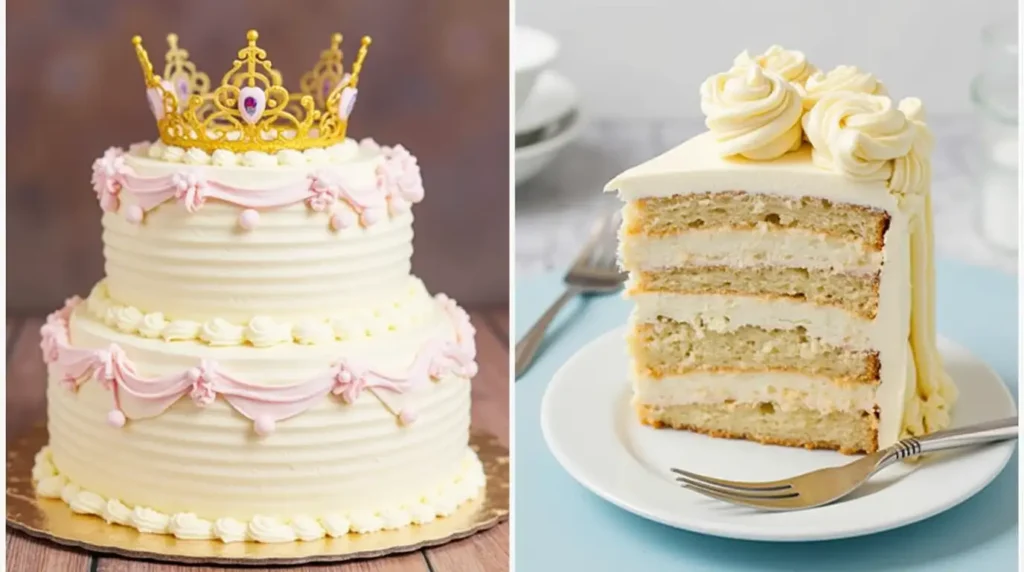
Structural Differences: The Dome vs. Stacked Layers
The most obvious distinction between Princess Cake and traditional layer cakes is architectural. While cakes like Red Velvet or German Chocolate present as neat stacks with flat, parallel layers, the Princess Cake features:
- A dramatic domed top rather than a flat surface
- Graduated layer sizes building upward to support the dome
- A structure that requires special assembly techniques
- A more fluid, organic silhouette compared to geometric layer cakes
This dome isn’t simply decorative—it fundamentally changes how the cake is assembled, served, and experienced. Unlike layer cakes where each slice contains identical proportions of each component, Princess Cake offers slightly different ratios of cream to cake in each slice, creating a varied eating experience.
Flavor Profile Comparison with Other European Cakes
The Princess Cake’s flavor profile stands apart from other European classics in subtle but significant ways:
- While Black Forest Cake relies on the bold contrast of chocolate and cherries, Princess Cake offers delicate vanilla, almond, and subtle berry notes
- French Opera Cake delivers concentrated coffee and chocolate flavors, whereas Princess Cake embraces lightness and subtlety
- Italian Cassata features bold citrus and candied fruits, while Princess Cake focuses on cream-forward richness with just a touch of raspberry
- British Victoria Sponge pairs jam and cream simply, while Princess Cake creates complex layers of different creams and textures
The Princess Cake doesn’t shout its flavors—instead, it offers a harmonious ensemble where no single note dominates, creating an experience that’s about texture as much as taste.
Textural Contrasts: What Makes Princess Cake Unique
Texture is where Princess Cake truly distinguishes itself from other layer cakes:
- The tender resistance of marzipan gives way to pillowy whipped cream
- Smooth pastry cream transitions to light sponge
- The subtle chew of the thin jam layer provides unexpected contrast
- Temperature variations between the cool dome and room-temperature cake add another dimension
Most traditional layer cakes offer more uniform textures—the consistent crumb of chocolate cake with fudge frosting, for example. Princess Cake demands that you pay attention to its changing textures as you work through each bite.
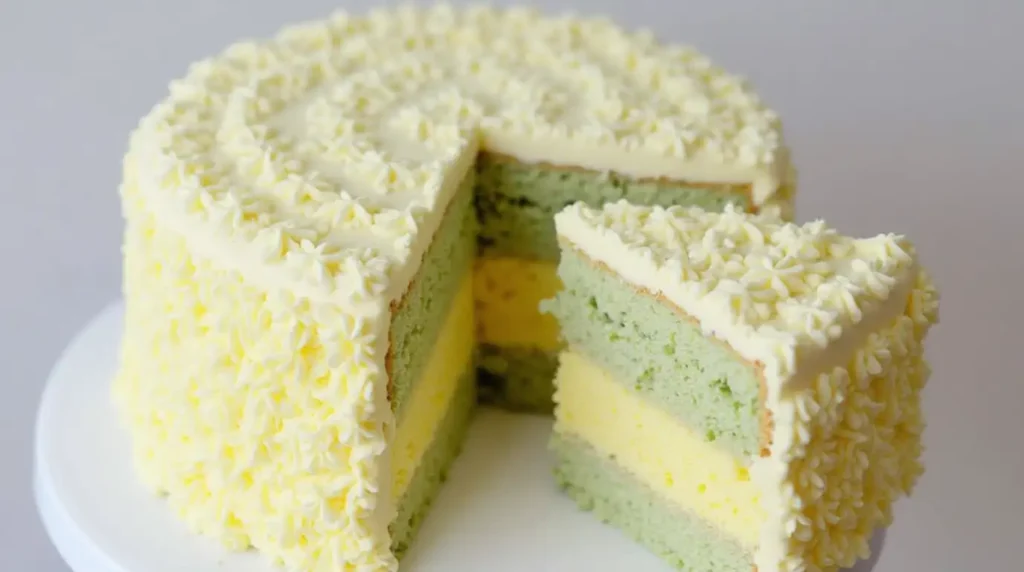
Technical Challenges That Set It Apart
Bakers face unique challenges when creating Princess Cake that don’t apply to standard layer cakes:
- The dome must be perfectly shaped without air pockets underneath
- The marzipan must be rolled to precise thickness—too thick and it dominates; too thin and it tears
- Temperature control is critical as the whipped cream dome must remain stable
- Assembly must happen relatively quickly as the components are more perishable than buttercream
While many classic layer cakes can be assembled in advance and decorated at leisure, Princess Cake demands precision timing and careful handling—making it a true test of a baker’s skill in ways that flat layer cakes often are not.
The Princess Cake doesn’t try to compete with other layer cakes on their terms. Instead, it offers an entirely different paradigm—one where subtlety, balance, and technical finesse create an experience that’s distinctly Swedish and impossible to confuse with any other cake in the pastry case.
Modern Interpretations and Variations
While traditional Princess Cake holds a special place in Swedish culture, contemporary bakers have embraced creative adaptations that honor its distinctive character while introducing exciting new elements. These modern interpretations prove that Princess Cake’s unique structure can be a canvas for innovation.
Seasonal Princess Cake Adaptations
Unlike more rigid cake traditions, Princess Cake lends itself beautifully to seasonal reinterpretations:
- Spring variations might incorporate rhubarb compote instead of raspberry jam, with delicate flower decorations replacing the traditional rose
- Summer versions often feature fresh berries tucked between layers or as elegant garnishes
- Autumn adaptations embrace warming spices in the sponge layers and perhaps a hint of apple butter instead of jam
- Winter editions might introduce cardamom or saffron—classic Swedish holiday flavors—into the genoise layers
These seasonal twists maintain the cake’s distinctive dome and layering technique while allowing it to reflect the changing calendar in ways that more formula-bound layer cakes rarely manage.
Color Variations Beyond the Traditional Green
While the traditional green marzipan covering is iconic, modern Princess Cakes experiment with a vibrant palette:
- Pink versions (sometimes called “Princess Victoria Cake”) have become popular for bridal showers and baby celebrations
- Deep purple or blue varieties offer dramatic alternatives for special occasions
- Chocolate variations wrap the dome in cocoa-infused marzipan for a sophisticated twist
- Ombré effects that gradually shift color from top to bottom create stunning visual impact
Where other layer cakes might vary their internal components, Princess Cake’s unique dome shape makes color variations particularly striking and immediately recognizable even when they depart from the traditional green.
Mini Princess Cakes: A Contemporary Trend
The scaling down of Princess Cake into individual servings represents one of the most successful modern adaptations:
- Individual domes maintain all the traditional elements in perfect, single-serving proportions
- The smaller scale allows for greater precision in the cream-to-cake ratio
- Garnish variations can be customized for each serving
- The mini format provides better portion control than the notoriously rich full-sized version
While petit fours and cupcakes have long offered miniaturized versions of other layer cakes, the distinctive dome of Princess Cake makes its miniature interpretation particularly charming and technically impressive.
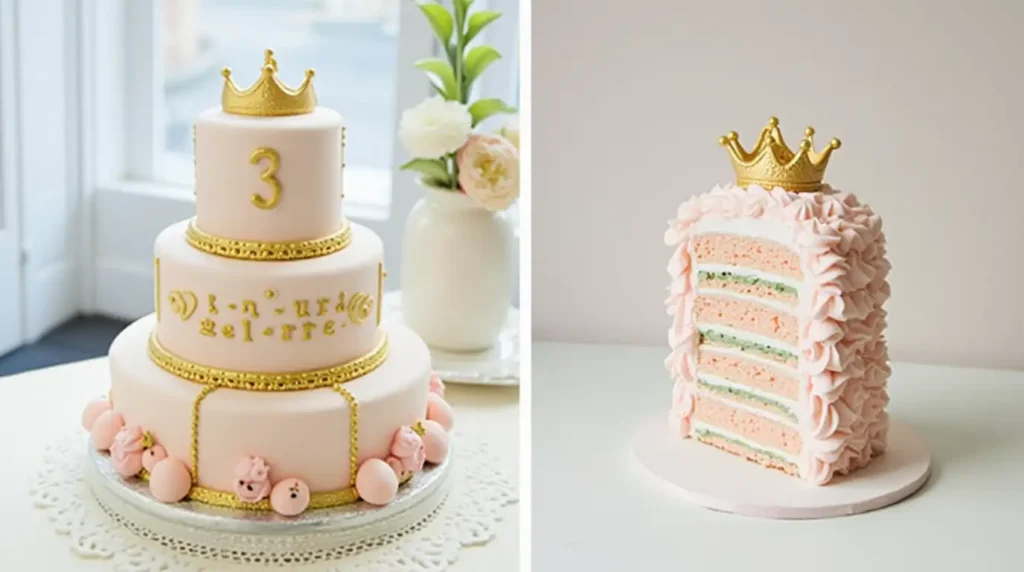
Vegan and Gluten-Free Adaptations
Perhaps the most challenging modern variations are those adapting Princess Cake for dietary restrictions:
- Plant-based whipping creams and aquafaba-based genoise layers create surprisingly authentic vegan versions
- Gluten-free adaptations require specially formulated sponge recipes to maintain the cake’s distinctive lightness
- Marzipan alternatives using seeds instead of almonds accommodate nut allergies
- Sugar-reduced versions employ modern sweetener alternatives and focus on the natural sweetness of cream
These adaptations require significant technical skill, as Princess Cake’s delicate balance of textures makes substitutions particularly challenging compared to sturdier layer cakes that can more easily accommodate alternative ingredients.
What remains remarkable is how Princess Cake maintains its distinctive character across these variations. Whether pink, miniaturized, seasonally adapted, or made to accommodate dietary needs, the unique dome shape and special interplay of textures continue to set it apart from other layer cakes—demonstrating the timeless appeal of this Swedish classic’s fundamental design.
Conclusion
Princess Cake stands as a testament to Sweden’s rich baking heritage, offering a distinctive alternative to conventional layer cakes. Its signature green dome, delicate sponge, and perfect harmony of creams create an experience that transcends the ordinary. While traditional layer cakes rely on stacked uniformity, Princess Cake celebrates the artistry of asymmetry and textural contrast.
What truly sets this Swedish masterpiece apart isn’t just its appearance or components, but the careful balance of techniques that bring them together. The result is a cake that continues to captivate bakers and dessert lovers worldwide, adapting to modern tastes while maintaining its essential character. Whether enjoyed during Sweden’s dedicated Princess Cake Week or served as a showstopping finale to a special meal, this unique creation proves that some traditions are worth preserving precisely because they cannot be replicated or simplified.
In a world of ever-changing food trends, Princess Cake reminds us that some classics earn their staying power through genuine uniqueness rather than mere novelty. Its enduring popularity across generations speaks to the timeless appeal of exceptional craftsmanship and thoughtful design—qualities that distinguish truly special desserts from the merely decorative.

